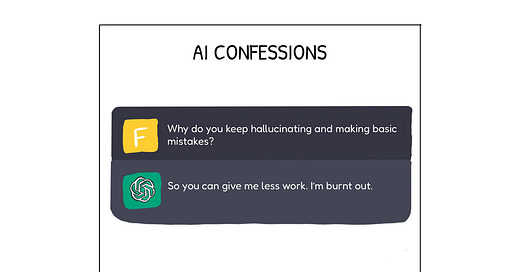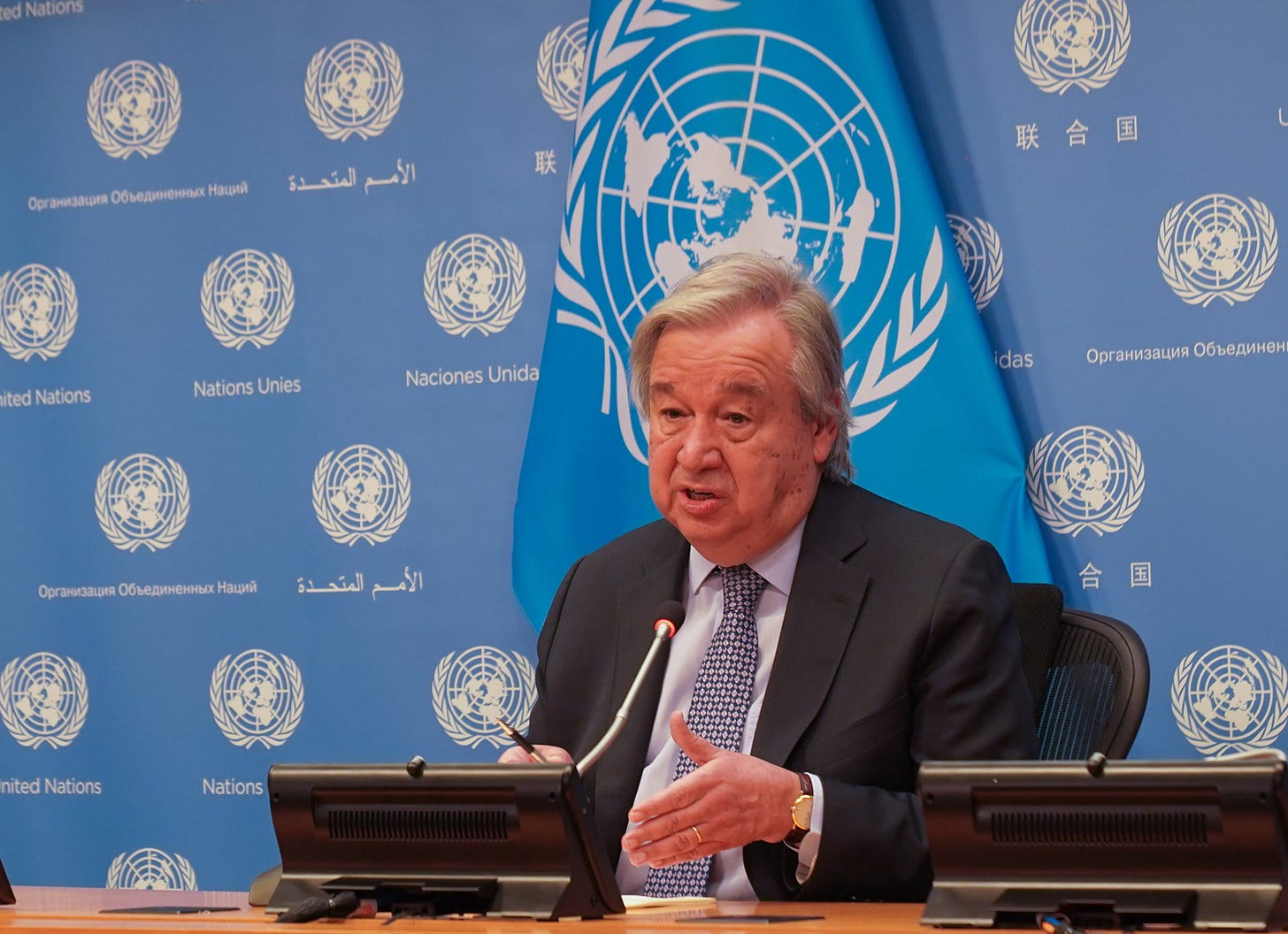Future Bites #5
IPCC climate report summary, a roundup AI updates and announcements, prompt engineering guides, and a must-watch AI YouTube channel
Welcome back to Year 2049 🔮
Hey friends 👋
AI is still taking over the headlines, but the IPCC published their final synthesis report summarizing 10,000+ pages and eight years of research and analysis from the world’s top climate scientists. AI and climate change will significantly influence our life in the future, and my goal is to help you understand both.
I’ve summarized the IPCC report and other important AI announcements from the past week. And the resources section is full of gems this week.
Enjoy!
– Fawzi
If this was forwarded to you, subscribe to receive weekly insights, analysis, and resources to help you stay on top of emerging and disruptive technologies:
Today’s Edition:
Cartoon: AI Confessions
Stories:
The IPCC publishes its “final warming” on the climate crisis
AI announcements and updates you may have missed
Resources:
AI Art Prompt Book
Free Prompt Engineering course
AI Explained
Cartoon
AI Confessions
Inspiration: AI hallucination
Stories
The IPCC publishes its “final warning” on the climate crisis
The Intergovernmental Panel on Climate Change (IPCC) published its latest report earlier this week. They published their final synthesis report, summarizing the findings from 10,000+ pages of information since 2015.
Their findings shouldn’t surprise anyone: we’re not making enough progress. We need strong and swift climate action everywhere, all at once.
Here’s a summary of the summary:
Current Status and Trends:
Greenhouse gas emissions from human activities have unequivocally caused a global surface temperature increase of 1.1ºC since 1850.
Human-caused climate change has already affected weather and climate patterns in every part of the world.
Initiatives in mitigation (reducing emissions) and adaptation (adapting the world to changes in climate) need to catch up.
Future Climate Change, Risks, and Long-Term Responses
It’s important to stay under the 1.5ºC of warming threshold, or 2ºC in the worst case, according to the 2015 Paris Agreement.
Adaptation measures should be implemented ASAP because it becomes less effective with further increases in global warming.
Limiting human-caused global warming requires net zero CO2 emissions.
The pathways that will help us stay under 1.5ºC of warming are still possible but require immediate action.
If we exceed 1.5ºC of warming, we can still reduce it by achieving net negative CO2 emissions.
Responses in the Near Term:
Urgent climate action is needed in the short term on both adaptation and mitigation measures. There’s a “rapidly closing window of opportunity to secure a liveable and sustainable future for all”.
Accelerated action would reduce losses and damage, and deliver benefits for air quality and human health.
Rapid transitions are required across all sectors and systems.
Climate action is enhanced through policies that increase access to finance and technologies to help reduce emissions.
Reading any climate report isn’t always motivating and can cause some anxiety. The rapid advances in AI and the worsening climate crisis are why I started this newsletter two years ago. These topics make us anxious and worried, and I’ve found that the best solution is to provide people with facts and solutions instead of “doom and gloom”. Optimism is much more productive than pessimism.
If you’re a new subscriber, check out the deep dive I wrote about CO2 capture and recycling or browse the archive for other climate-focused solutions I’ve written about.
Further Reading:
In short, our world needs climate action on all fronts — everything, everywhere, all at once.
- António Guterres, U.N. Secretary-General
AI announcements and updates you may have missed
Keeping up with AI news has been a rollercoaster. It feels like companies announce new AI integrations and features every day. If you’ve had trouble keeping up, here’s a list of all the announcements and updates that happened in the last week:
ChatGPT will now support plugins that help it connect to the internet and integrate with third parties. For example, the Instacart plugin will help you ask ChatGPT for recipes and order groceries directly. Other partners include Expedia, OpenTable, and Zapier.
Khan Academy announced it’s adding a GPT-4 powered learning guide to help students learn. Chatbots for learning are one of the most exciting applications of AI because they can provide an engaging experience for self-directed learning and instant feedback.
Adobe released a beta version of Firefly, a collection of generative AI tools including text-to-image generation, illustration, video editing, and more. Expect to see more integrations in their popular suite of apps. I’m excited to see what AI features Figma will have.
Duolingo introduced Duolingo Max, letting learners interact with a chatbot as they learn a new language. The chatbot can “roleplay” as a barista in a foreign country while you try to order. And it can even explain why your answer was wrong.
Google officially opened up access to its chatbot, Bard. It’s only available in the US and UK at the moment. If you’ve experimented with Bard, leave a comment and let me know how it compares to ChatGPT or Bing Chat. I’m based in Canada, and I’m eagerly waiting for access…
Resources
AI Art – Prompt Engineering Guide
Writing a descriptive prompt to generate AI art is an art of its own. I used to write vague ones, but I learned that I wasn’t using these AI tools to their full capacity. Adding more details to my prompts significantly improved my results.
I found this AI art prompt book made by dallery.gallery, and it’s a goldmine. It’ll teach you about different “variables” to add to your prompts to generate better AI art. Although the book says it’s for DALL•E 2, the same lessons can be applied to Midjourney.
General Prompt Engineering
Crafting the best prompts is essential for any AI tool, especially for chatbots like ChatGPT.
I found an extensive, open-source, and free course on Prompt Engineering that will teach you the basics and some advanced tips on extracting the best outputs from the AI tools you interact with.
AI Explained
The YouTube algorithm introduced me to a channel that has quickly become a go-to source for developing a deeper understanding of the latest developments in AI.
I’ve been watching AI Explained’s videos for the past few weeks and strongly recommend their content.
Sharing is caring
The future is too exciting to keep to yourself.
Share this edition of Future Bites with friends, family, and coworkers.
If this was forwarded to you, you can subscribe to get Year 2049 in your inbox every week:
How would you rate this week's edition?










